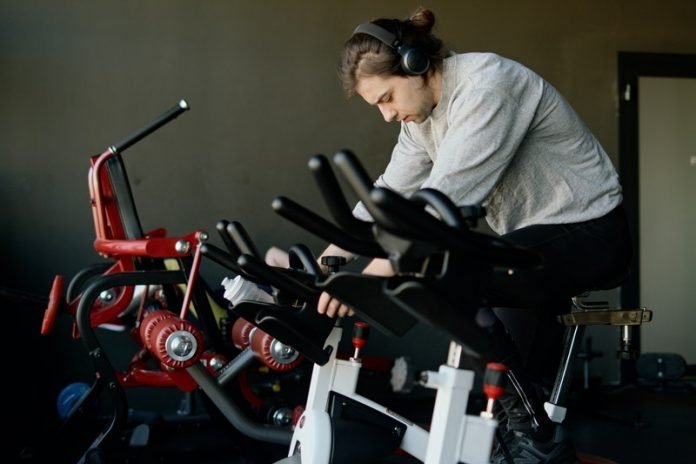
Spin instructor Trammell Logan knows all too well that strokes can happen to anyone, regardless of age or fitness level.
The 33-year-old from New York City is one of many stroke survivors nationwide sharing their stories on World Stroke Day with the American Stroke Association, a division of the American Heart Association, to encourage all Americans to learn the warning signs of stroke.
“I went from teaching 27 fitness classes a week, to possible brain damage in a blink of an eye,” he said.
“Strokes can happen to anyone. We all need to know the warning signs and what to do because you never know when you’ll need to help yourself or someone else having a stroke.”
Each year approximately 800,000 people in the U.S. suffer a stroke. Worldwide, one in four will suffer a stroke in their lifetime.
Knowing stroke warning signs and seeking immediate medical attention can make the difference between recovery and disability or death.
The American Stroke Association encourages people to learn the acronym F.A.S.T. to help them remember the warning signs for stroke. F.A.S.T. stands for:
- Face Drooping – Does one side of the face droop or is it numb? Ask the person to smile. Is the person’s smile uneven?
- Arm Weakness – Is one arm weak or numb? Ask the person to raise both arms. Does one arm drift downward?
- Speech Difficulty – Is speech slurred? Is the person unable to speak or hard to understand? Ask the person to repeat a simple sentence like “The sky is blue.”
- Time to Call 911 – If someone shows any of these symptoms, even if the symptoms go away, call 911 and get to a hospital immediately. Check the time so you can tell emergency responders when the first symptoms appeared.
Although he was at higher risk for stroke due to a history of pulmonary embolism and heart attack, stroke was far from Logan’s mind when the pandemic hit in March 2020 and he was diagnosed with COVID-19.
Several months later Logan suffered a stroke.
“During my stroke I lost use of my right hand and couldn’t speak. I had both the A—Arm weakness— and S—Speech difficulty—part of F.A.S.T., but I didn’t want to go to the hospital because of COVID,” he said.
“My friends talked me into it, but I waited several hours which I would never recommend.”
Research shows that while most people say they would call 911 in a stroke emergency, real-world data shows that up to 75% of those experiencing a stroke first called friends or family, like Logan did. Strokes are most treatable right after they happen.
Delaying getting help often means people can’t get treatment in time and are more likely to be disabled or die from their stroke.
Along with learning stroke warning signs comes another important message from the American Heart Association and American Stroke Association: Don’t Die of Doubt.
“If you or someone around you shows signs of stroke, get it checked out right away. It’s always better to err on the side of caution with stroke signs because you’re losing brain cells every minute during a stroke,” said Lee H. Schwamm, M.D., chair of the American Stroke Association Advisory Committee.
“Remember that even during a pandemic, hospitals are still the safest place for you to be when medical emergencies strike. Please let us help you—don’t die of doubt.”
As for Logan, he’s back doing what he loves and teaching a spin class. He’s also using his story to help others.
Many strokes are preventable and managing blood pressure—the leading cause of strokes—is a big step in the right direction, Schwamm said.
Nearly 50% of all adults in the U.S. have high blood pressure, and almost three out of four (74%) people with high blood pressure do not have it under control.
If you care about stroke, please read studies about what are ideal blood sugar levels for preventing repeat strokes, heart attacks, and drinking coffee this way can help prevent stroke.
For more information about brain health, please see recent studies about 5 critical steps to help prevent a stroke, and results showing 7 facts women should know to prevent and recognize stroke.
Source: AHA.



